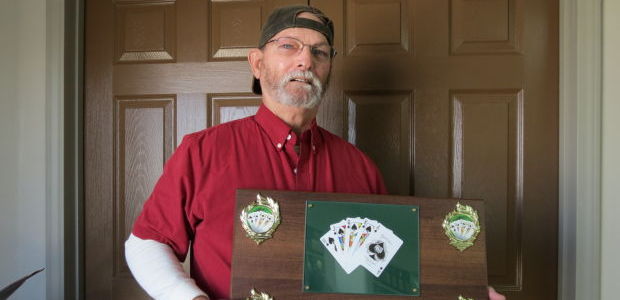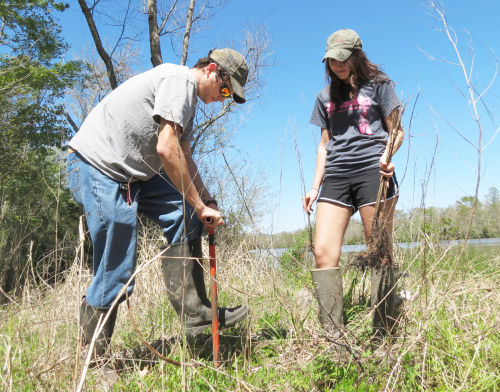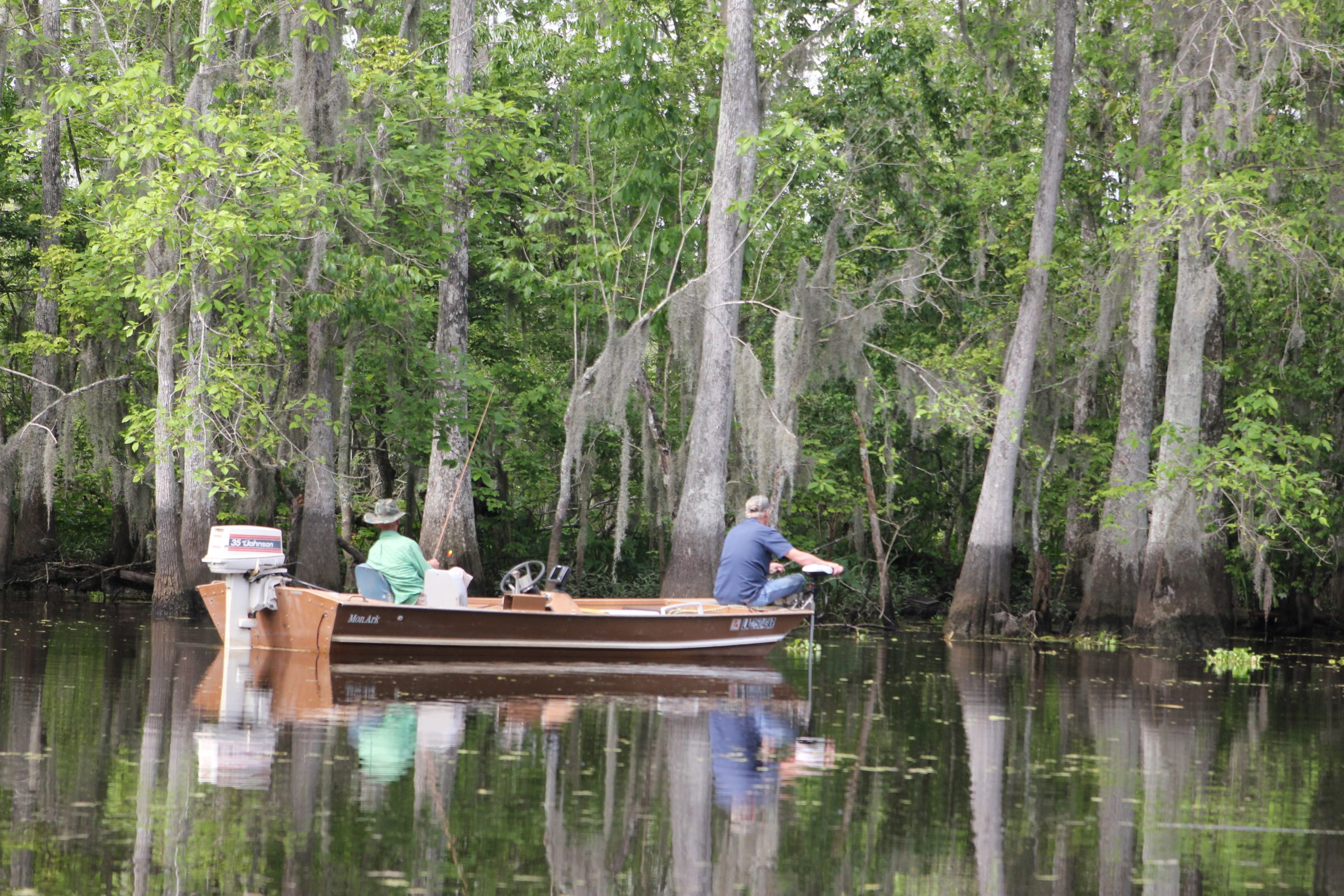
Mathews’ man’s gamble on winning hand pays off
March 19, 2013Nutria rodeo set for Saturday
March 19, 2013Doctor. Teacher. Carpenter. Accountant. Secretary. Black bear conflict officer.
Yes, that last one is a recognized occupation. But only in St. Mary Parish, an area so well-known for its high concentration of black bears that it hosts the Black Bear Festival year in April.
“I worked for the parish for seven years doing economic development work,” said St. Mary Parish black bear conflict officer Catherine Siracusa. “The black bear conflict officer position came open in 2002, and it sounded interesting, like something I could sink my teeth into and do.”
Like the bears in St. Mary Parish sink their teeth into garbage cans, Siracusa sank hers into her work.
Since 2002, Siracusa has traveled the parish responding to calls from, starting with the most frequent, bears in the yard, trashcans damaged by bears and even a bear trying to get to baby diapers in a vehicle.
“Bears like diapers, and even biologists can’t figure why,” Siracusa said. “They don’t eat them. They just tear them apart. They also get into the trashcans for food, especially greasy food.”
Siracusa fields about fields about 20 to 40 bear calls a month, usually one or two day, and mainly from areas located south of U.S. Highway 90, and, if she doesn’t get any calls, she is almost afraid to tell anyone about the lack of bear sightings.
“If we don’t get a call for a few weeks, I don’t want to call and tell the Louisiana Department of Wildlife and Fisheries biologists because I don’t want to jinx it,” she said.
In responding to calls, “The Bear Lady,” as she’s known around the parish, also works to educate residents on ways to deter the animals and prevent the two species from ever coming in contact, but poor public response to Siracusa’s suggestions continues to keep her busy.
“I stuck bear fliers on 500 doors in 2010 and got 10 responses,” Siracusa said. “Residents who called in to report bear sightings were like, ‘We didn’t have them here before, so why do we have them now?’”
According to Siracusa, the list of bear attractants is relatively short and most are common things people do not even think of such as bathing with sweet-scented bath products, burning sweet-scented candles or hanging bird feeders low enough for the bears to get into.
“Don’t make it Easter for the bears,” Siracusa said. “Double or triple bags with diapers in them or wait until the day of garbage run to put that bag in. We also have a bear-proof trashcan program in place, and I have been working to increase the number of these trashcans since I took the job. We had 400 then, and I want to get it up to as many as we can. ”
Bear-proof trashcans may be obtained by calling Progressive Waste Solutions at 1-800-693-4866, and the trash receptacles run about $200 a piece.
“It’s a learning curve, and we will manage it,” she continued. “The bear population will increase, and we will continue to protect the bears and educate the public.”
Siracusa knew the bear problem had reached a head when the bear’s complacency with human interaction became as casual as waving to a passing friend.
“We got a bear call once from Kemper Williams, a park that has suspended tent camping because of bear sightings,” Siracusa said. “The park keeps it very clean, but the bears there can open the trash barrels. Around dusk, a group of campers reported that a bear cruised right by them as they were sitting at a picnic table. The bear went to the garbage can, removed the bag and took it to the woods. That is unacceptable.”
Emboldened by the stroll of the laid-back bear, Siracusa took a new – and better – route to spreading her word by visiting St. Mary Parish 4-H clubs and educating future St. Mary Parish homeowners about how to live peacefully with the parish’s furry friends.
“The response started taking off when we teamed up with 4-H in late 2010,” she said. “St. Mary Parish 4-H leaders Jennifer Ducote and Adrianna Drusini lined me up to speak at every school in the parish, and I shared my bear experiences with students. I got such an overwhelming response from the teachers and kids in the parish. They know that program is something good.”
Siracusa’s latest collaboration with some of the parish’s 4-Hers came together after the injury of a dog that chased a bear in a Patterson neighborhood.
“No one actually saw the attack, but I think this is more of a dog chasing a bear than a bear after a dog,” said Maria David, LDWF black bear program manager. “Neighbors have complained about these dogs before, and the owners were warned this could happen if they did not keep an eye on their dogs.”
David fields bear calls from locations around the state, and late winter to early spring is the peak time for bear sightings, especially the state’s coastal bears.
“Most bears here do not den and remain active through the winter, and bears went into this past winter much leaner,” David said. “Now they are out foraging for food, and it is the tail end of winter and their natural food stuffs – acorns, persimmons and pecans – are not available right now. Bear activity in the parish was higher in last month than it has been all year, but, once spring sets in, it will be lower.
Like Siracusa, David recommended that residents invest in a bear-proof trashcan and put away pet food that is kept outside overnight.
“If bears found nothing to eat in a yard, they would stop coming around,” she said. “Don’t let them find anything to eat. The solution is in the hands of the residents. Moving a particular bear out of an area will not make much difference because they will just be replaced by another bear. I moved my first bear in that area 17 years ago, and bears are still going to the same place.”
Only a week after the bear-dog incident, Siracusa pulled together a plan that will hopefully keep the bears in the more natural, usually human-free habitat of Bayou Teche National Wildlife Refuge.
“I spoke at a 4-H junior leader meeting, and we were discussing ideas for activities to do in the area,” Siracusa said. “The Black Bear Festival is coming up, and I told the kids about the bear issues in Patterson. They said ‘Let’s do something’ and came up with ways to solve the problem, and I was able to secure 300 pecan, persimmon and cow oak trees from the Louisiana State University Agriculture Center. The students know that planting these trees is not an immediate fix for the issue, but it’s a step in the right direction.”
Friday afternoon, the impromptu goodwill mission, made up of 13 volunteers from the U.S. Fish and Wildlife Service, the Natural Resources Conservation Service, the U.S. Department of Agriculture and 4-H members, hiked deep into the swamps northwest of Centerville, armed with dibbles and ready to plant the 300 trees Siracusa received.
“Plant the cow oaks in wetter places, about five feet apart, near this lake,” said Bayou Teche NWR specialist Matt McCollister. “Plant the persimmon and pecan trees where it is dryer.”
Siracusa teamed up with 4-H junior leader McKaila Darden, a ninth grader at Centerville High School, to plant persimmon and pecan trees.
“Before listening to Catherine speak at our school, I thought black bears were just out to get me and eat me,” Darden, 15, said. “Now I know that if you make noise, they will usually just take off. They don’t like people too much. Some friends who aren’t in 4-H thought it was funny when I told them you could scare them off by tossing tennis balls at them, too.”
“This is one of the most rewarding parts of my job, getting to work with the students,” Siracusa said. “They have taken up the cause and help get information to residents. They are very community conscious.”
Volunteers Grant Darden, left, of Charenton, and Sheri Higgins, also of Charenton, plant cow oaks at Bayou Teche National Wildlife Refuge. Acorns from mature cow oaks are a food source for black bears.












